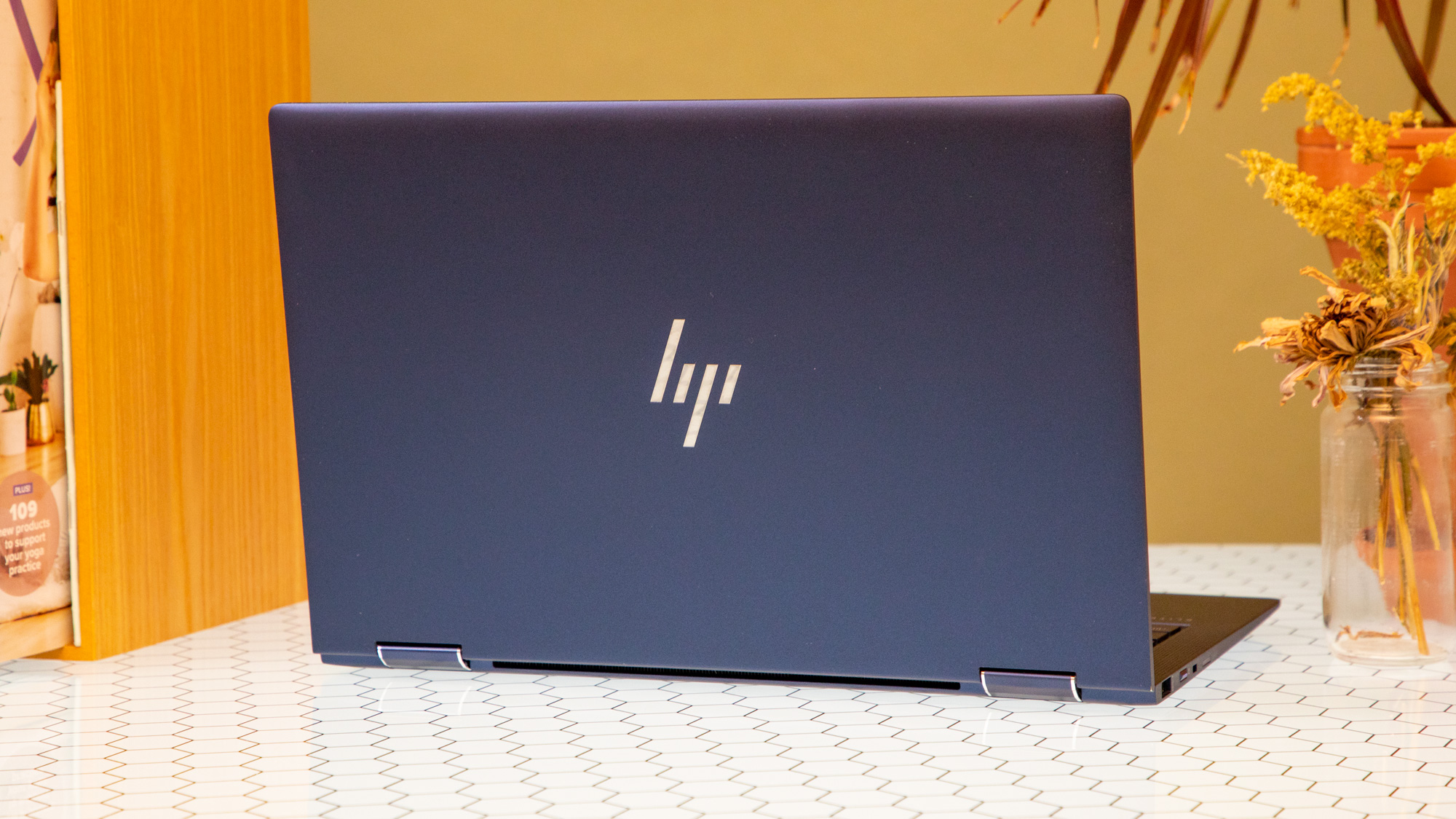6 best strength and conditioning exercises for runners
Add this circuit to your training plan

Whether you're new to running or you're gearing up for your first race, you'll know that there's a lot to juggle. From finding the right kit (check out the best running shoes on the market here), to fitting in training runs and prioritizing rest and recovery (here are the best massage guns), more often than not, strength training is something runners forget.
Yet strength and conditioning are important, however far or fast you plan on running. Strength training can help improve your running economy, helping you run with better form — this in turn can help you get faster. It can also help prevent injuries by improving imbalances and strengthening the muscles and joints.
But which exercises should runners focus on? Below, we spoke to ultra-marathon runner Sarah Riandet, who shared her go-to strength and conditioning circuit with Tom's Guide.
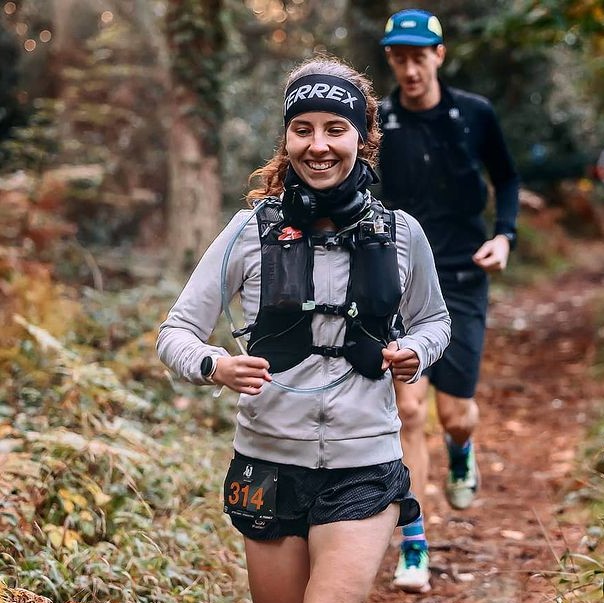
Sarah Riandet is an ultra-marathon trail runner and marathon runner. She has competed in a number of international ultra-marathons ranging from 50k trail races to multi-stage mountain ultramarathons, including the Ultra X World Championships in 2022. Sarah works within the Enertor team to help runners and athletes stay pain and injury free.
A strength training circuit for runners
"This circuit is perfect for runners who want to build up strength towards better performance and to enable them to stay injury free all year round," says Sarah. "Don’t forget to warm up beforehand to avoid injury and prepare your body to exercise. Repeat the following sets 3 times and recover 90 seconds in between sets before stretching."
Set 1
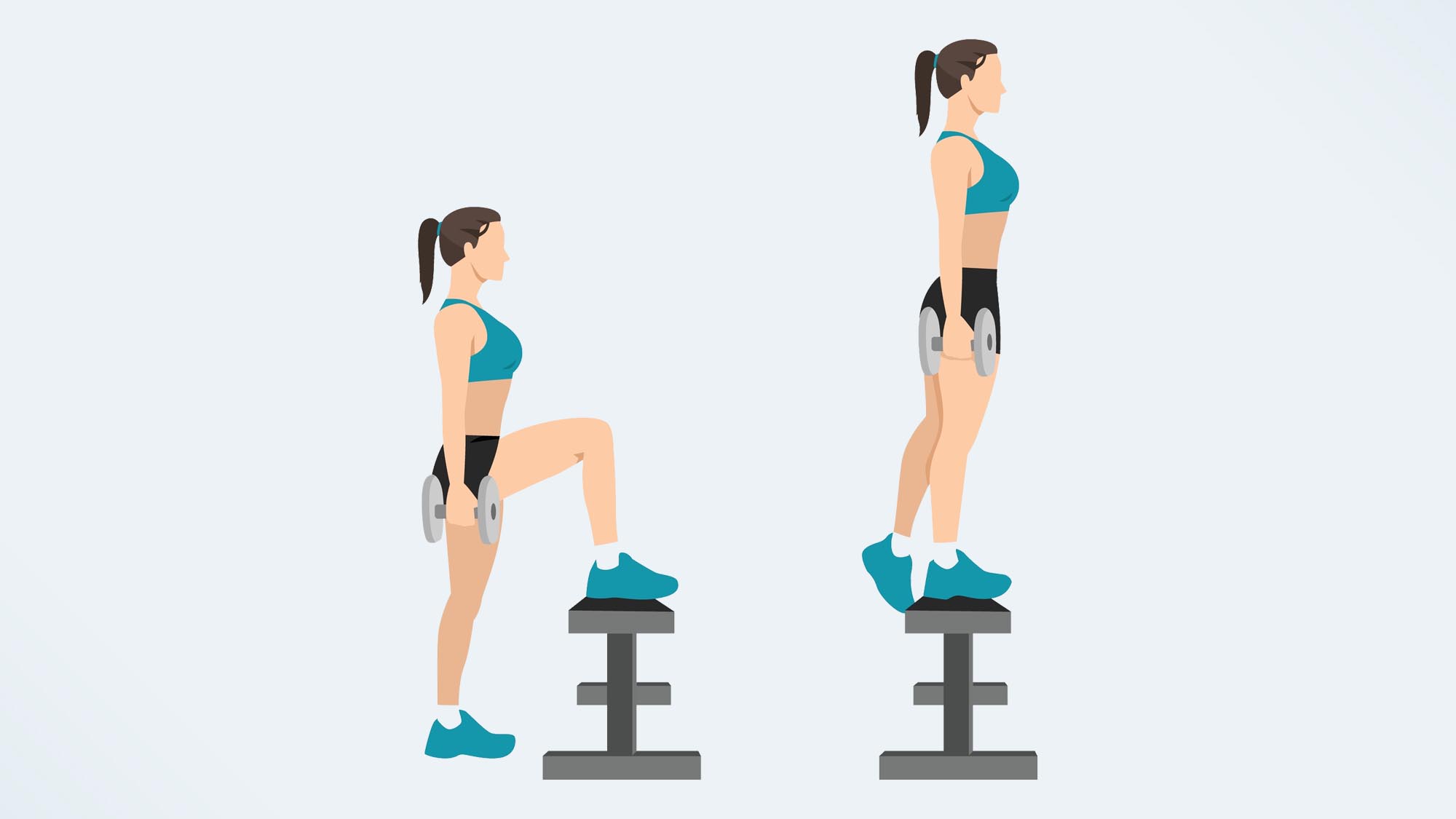
Box step-ups
All you need is a box, and you can even use a bench or a chair if you’re working outside a gym. Box step-ups are a very effective unilateral exercise to develop strength in quadriceps, glutes, which also help to gain balance and coordination.
- Start off both feet on the ground, hip width apart.
- Step your right leg on top of the box or chair,
- Press into your right heel and use your right glute to push yourself up.
- Come back down the same way you went up, as slow as you can, engaging your leg.
To increase difficulty, you can use a couple of dumbbells or try lifting your leg to a 90-degree angle before aligning it to your other leg on the top of the box. This will be a very good way to work on coordination and challenge your balance.
Sign up to get the BEST of Tom's Guide direct to your inbox.
Get instant access to breaking news, the hottest reviews, great deals and helpful tips.
Perform 10 reps on each side.
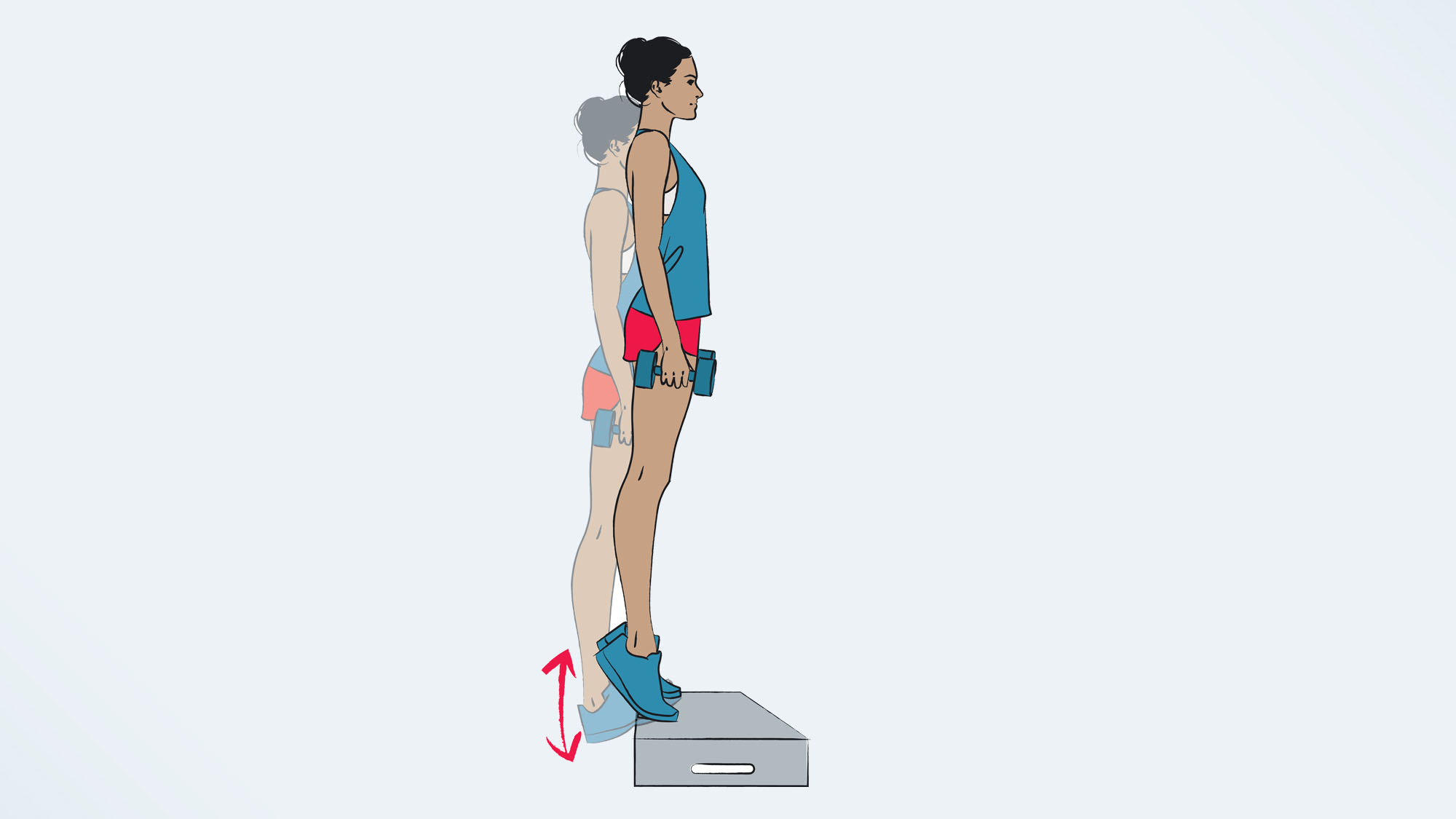
Calf raises
Strong calves can go a long way when running, especially on hills or trails. After step-ups, come back to the ground and grab a dumbbell or a kettlebell (check out the best adjustable dumbbells here).
- Stand tall with your feet hip-width apart.
- Lift your heels off the floor and hold a couple of seconds at the top of the movement. You should feel your calves engaged.
- Come back down slowly, before repeating.
To make it more challenging or add variety to your workout, you can try the unilateral version. You can also stand on the ball of your feet on the first step of a flight of stairs, and first lower your heel down before lifting it up.
For optimal results, repeat for 12 reps.
Set 2
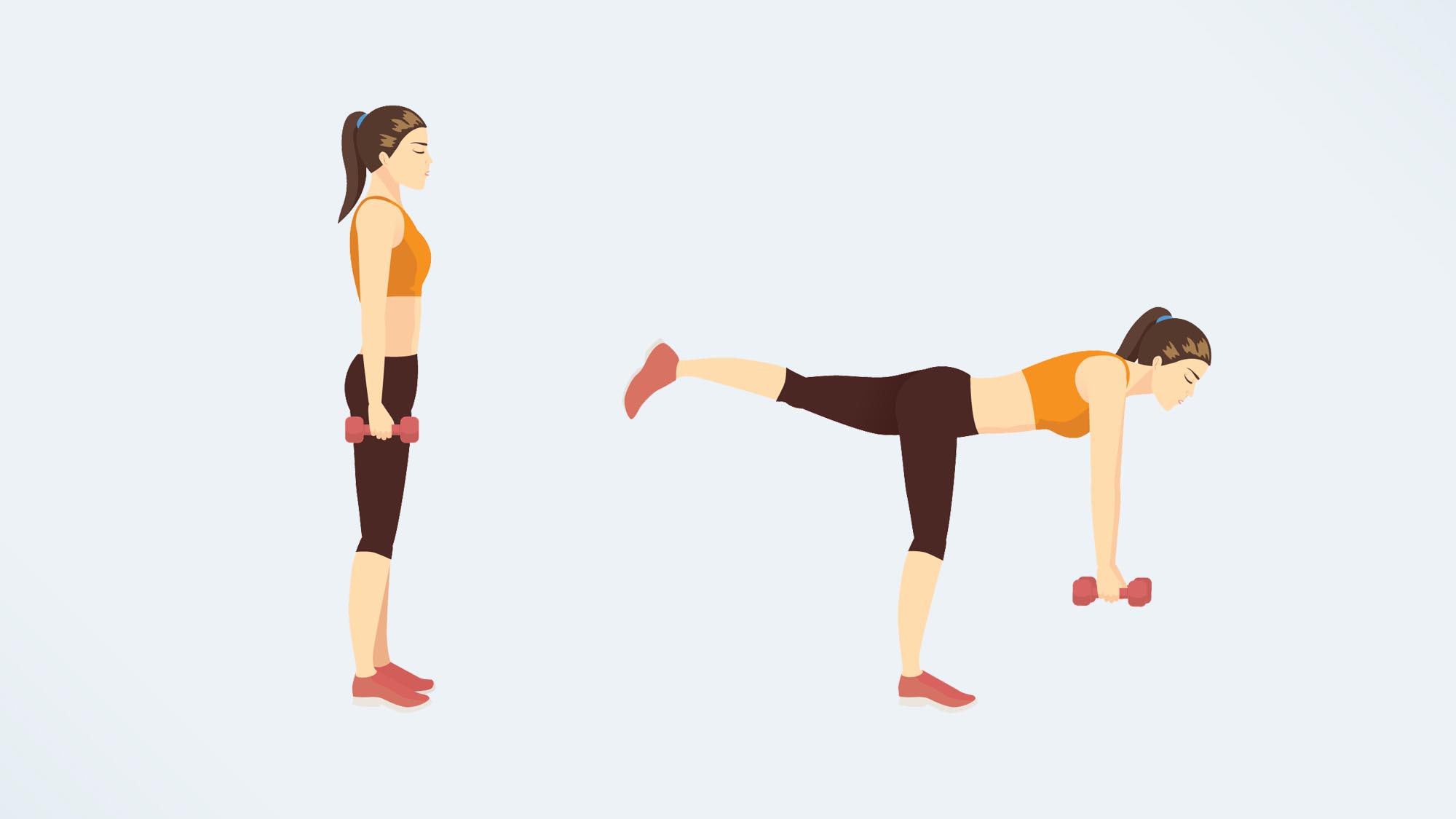
Single-leg deadlifts
No matter whether you run on hills or on track, single-leg deadlifts are very helpful to build up hamstring strength and work on its flexibility. You can easily try them bodyweight at first to get used to the exercise, and once you’ve become more familiar with it, add in a couple of dumbbells.
- Start standing upright, with your feet hip-width apart, and legs straight but make sure your knees aren’t locked.
- At the same time, hinge from the hips as you would do on a deadlift and slowly swing your left leg behind you.
- Both legs should be straight, your hips should be facing the floor, and your back should remain straight. Your legs and chest should be in a T shape.
- To come back up, push into your right heel and come back to your original standing pose, hovering on the floor with your left foot to work on balance.
Repeat for 10 reps on this leg, then switch sides for 10 more reps.
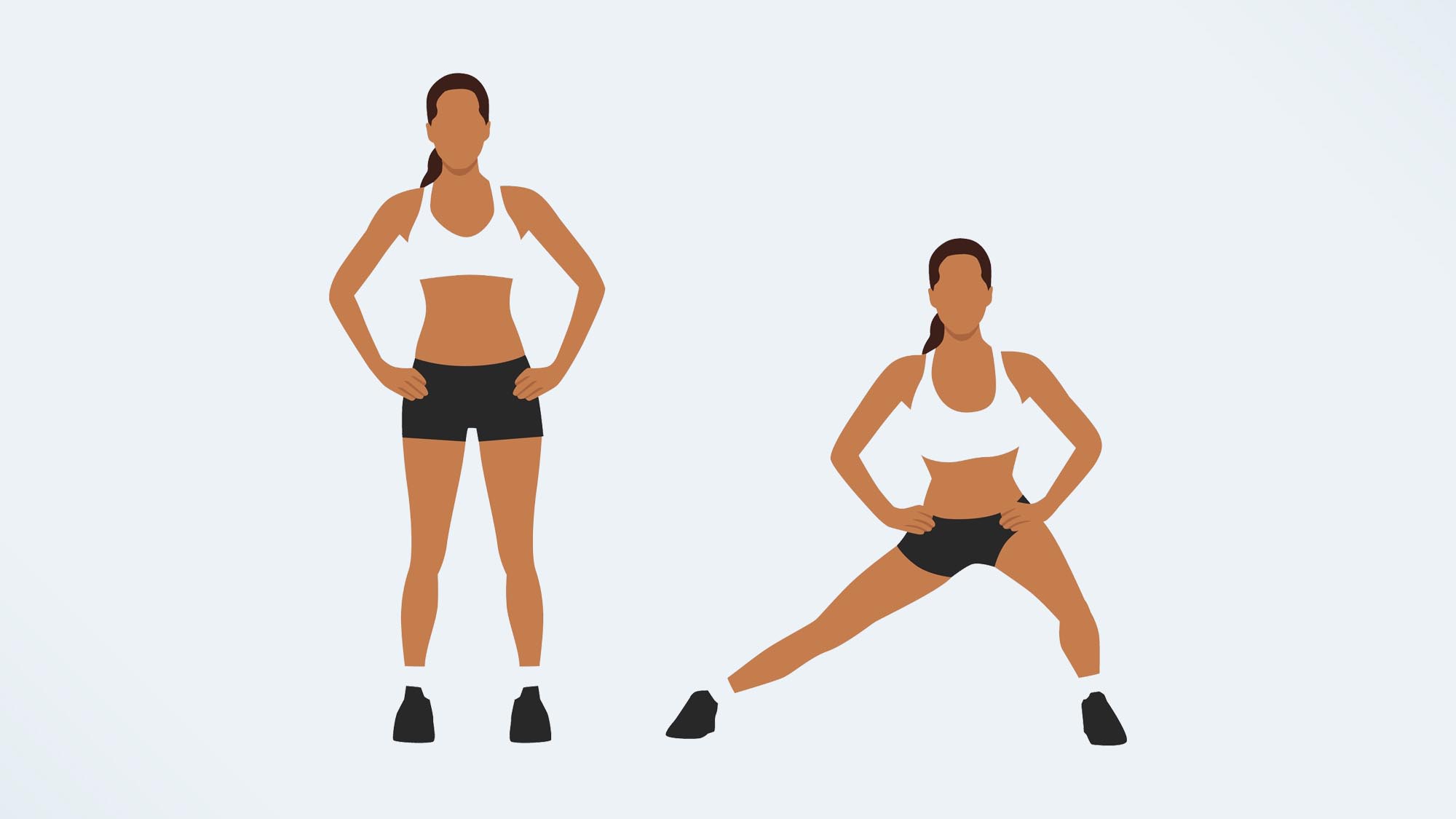
Side lunges
Side lunges are particularly beneficial for hip abductors, adductors, and glute medius. As per the previous exercise, do not feel pressured to grab weights and try them out bodyweight – it might be tricky to get the form right at first.
- Stand with your legs wide, feet to a slight outward angle.
- Keep your left knee straight, bend your right knee to a 90-degree angle (if your mobility is not restricted).
- Hold for a couple of seconds on your lunge and push your heel into the floor to come back to your original position.
- When performing this lunge, check that your bum goes back, but your chest should stay lifted and you should stand up right. If you feel that your back starts to round, don’t go any further and come back up.
Alternate between legs for 20 reps or perform 10 reps on this side and switch to the other side.
Set 3
Single-leg toe lifts
Don’t forget about strengthening your feet! With a single step exerting a force twice our body weight, over a single day our feet can support the equivalent of hundreds of tons. And that’s not even considering the impact when running long distances. This exercise is going to help get stronger feet and ankles, preventing shin splints.
- Start off sitting on a bench with your foot hanging on its edge – but keep your shoes on.
- Loop the handle of the kettlebell around your foot.
- Allow the weight to pull your foot down slowly and flex it back towards your shin.
Repeat for 10 reps on this side before switching sides. You can watch a video of this exercise here.
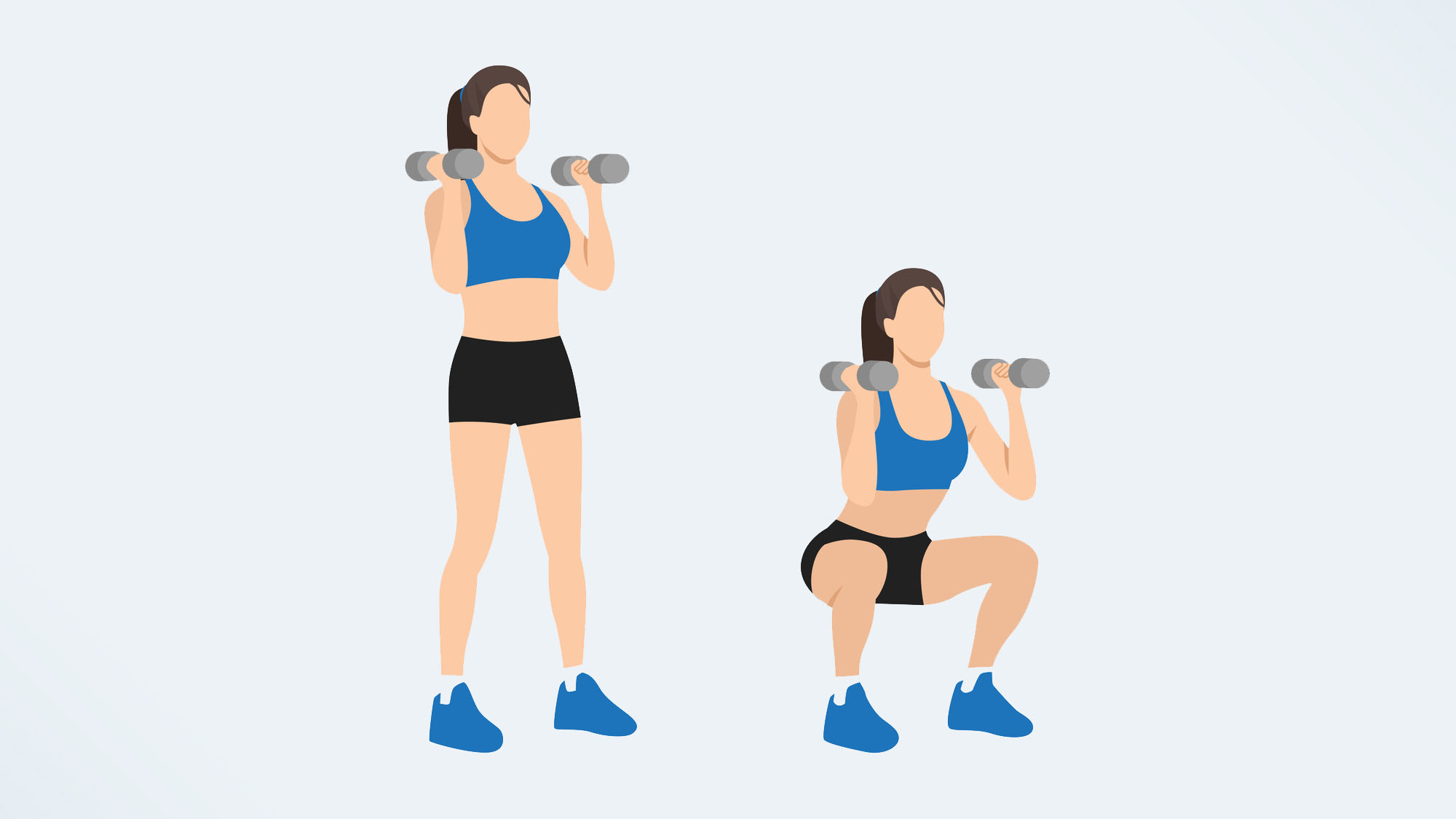
Squats
It’s finally time to pick up heavier weights and finish off with a classic, yet effective exercise: squats. These will help you get stronger glutes and quadriceps.
- Start off feet a little bit wider than hip-width apart, slightly turned out. Your knees should be in line with your feet.
- You can either hold dumbbells down or for more core and back strength, bring them to your shoulders.
- Squat down as you would sit back on a chair. You should still be able to see your toes maintain your back straight and your chest up.
- To come back up, push on your heels, and without locking your knees at the top of your squat, squeeze your glutes.
Repeat for 12 reps. If you still find it too easy, slow down the movement or pick up heavier dumbbells. Read more about how to do a squat, plus what happened when our fitness editor did 100 goblet squats a day for a week here.
The best stretches for runners
Another important part of strength and conditioning for runners is stretching out those tight legs! Here's Sarah's go-to stretches:
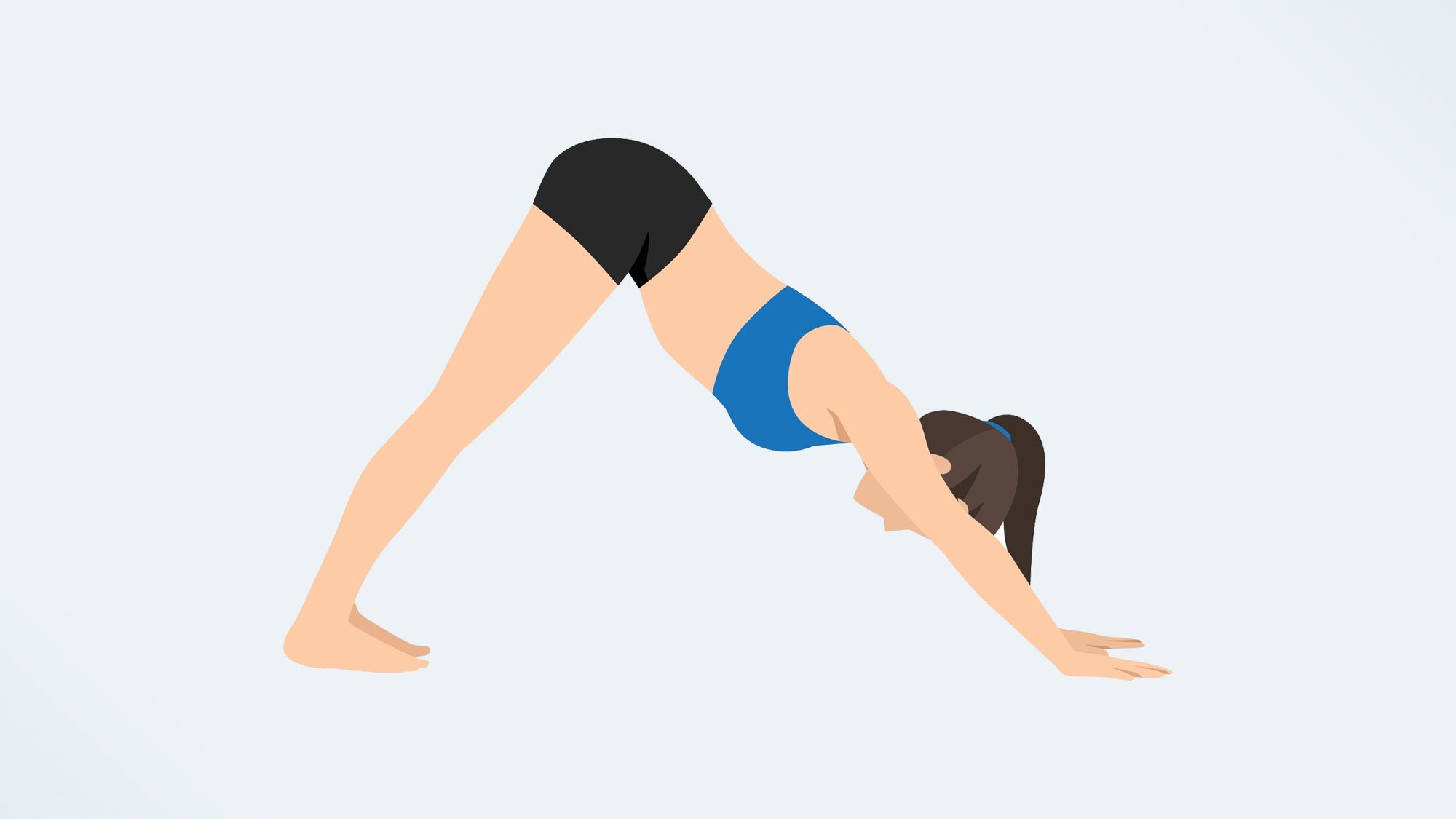
Downward-facing dog
This stretch is very common in yoga, but runners will find it useful too. It stretches the back of your legs and your hamstrings.
- Start off in a high plank.
- As you exhale, hinge your hips and reach your sit bones toward the ceiling. Make sure your knuckles press onto the floor and your fingers are spread wide.
- Look between your legs and try to reach your tailbone high.
- If you need to, slightly bend the knees to make sure your spine remains straight.
You should feel a nice stretch on the back of the legs. You can also pedal through your feet to ease into the stretch. Hold it for 30 seconds to 1 full minute.
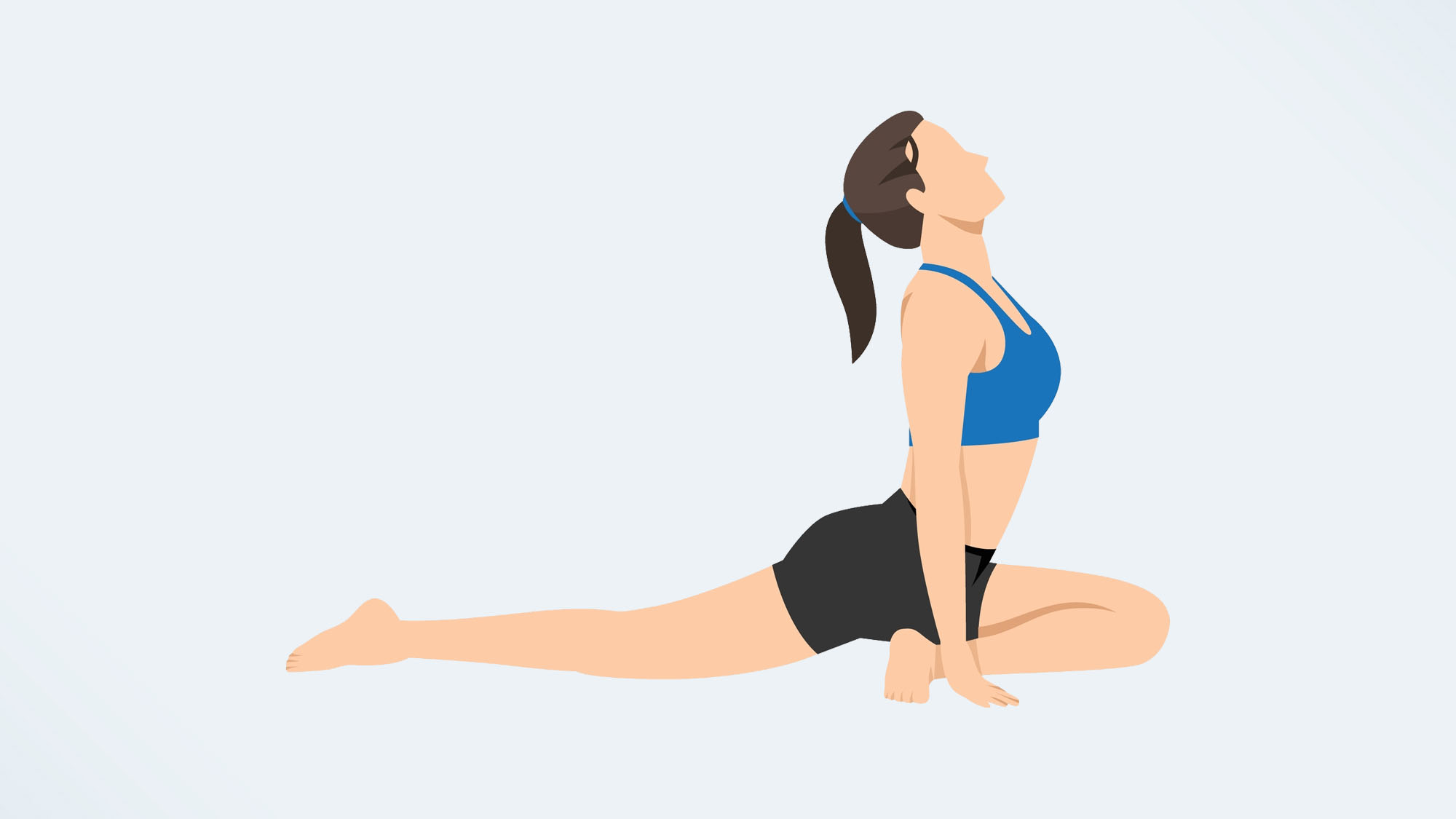
Pigeon pose
This is a very efficient hip opener and glute and psoas stretch. It is not uncommon for runners to get tight hip flexors or lose mobility in their hips.
- Start on all fours, shoulders stacked with your wrists, knees stacked with your hips.
- Without moving your hands, bring your left knee forward to touch your hand and bring your left foot as close as possible to your right hand.
- Extend the right knee backward and look over your right shoulder to check your right knee is directly behind you.
- Make sure your hips remain square and fold down over your left leg – you should feel a nice stretch over your right hip flexor and your left glute. Hold the stretch for 1 minute and repeat it on the other side.
To deepen the stretch, bring your knee as much as possible to a 90-degree angle.
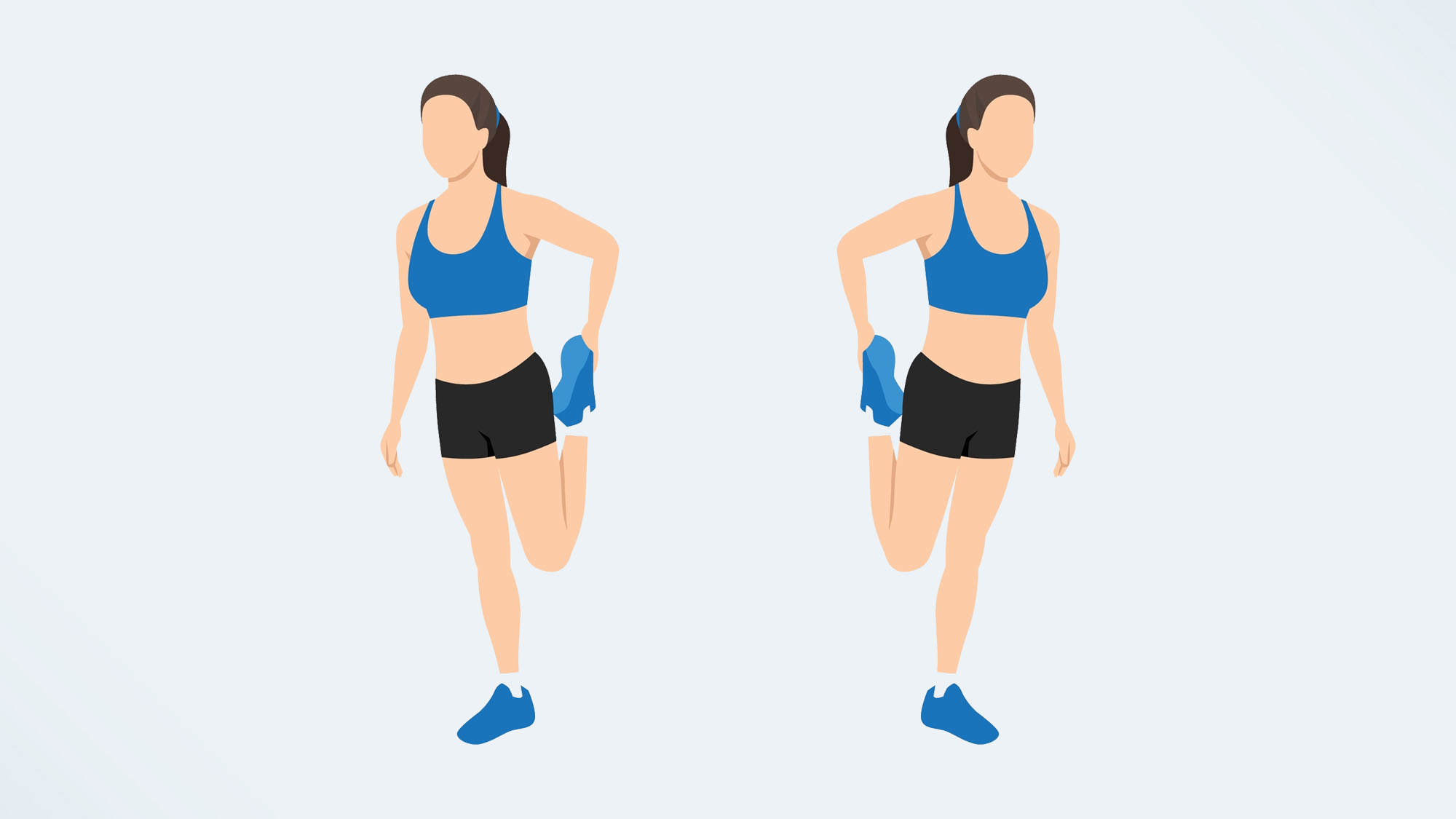
Standing quad stretch
This classic stretch doesn’t get old when it comes to releasing the front of your thighs!
- Start standing, pull your right leg behind you with your right hand.
- Hold it as close as possible to your bum, while maintaining both knees parallel and in line with each other. You should feel a nice stretch in your right quad.
If you’re feeling a little wobbly, feel free to hold on to a chair or a wall. Hold for 1min and switch sides.
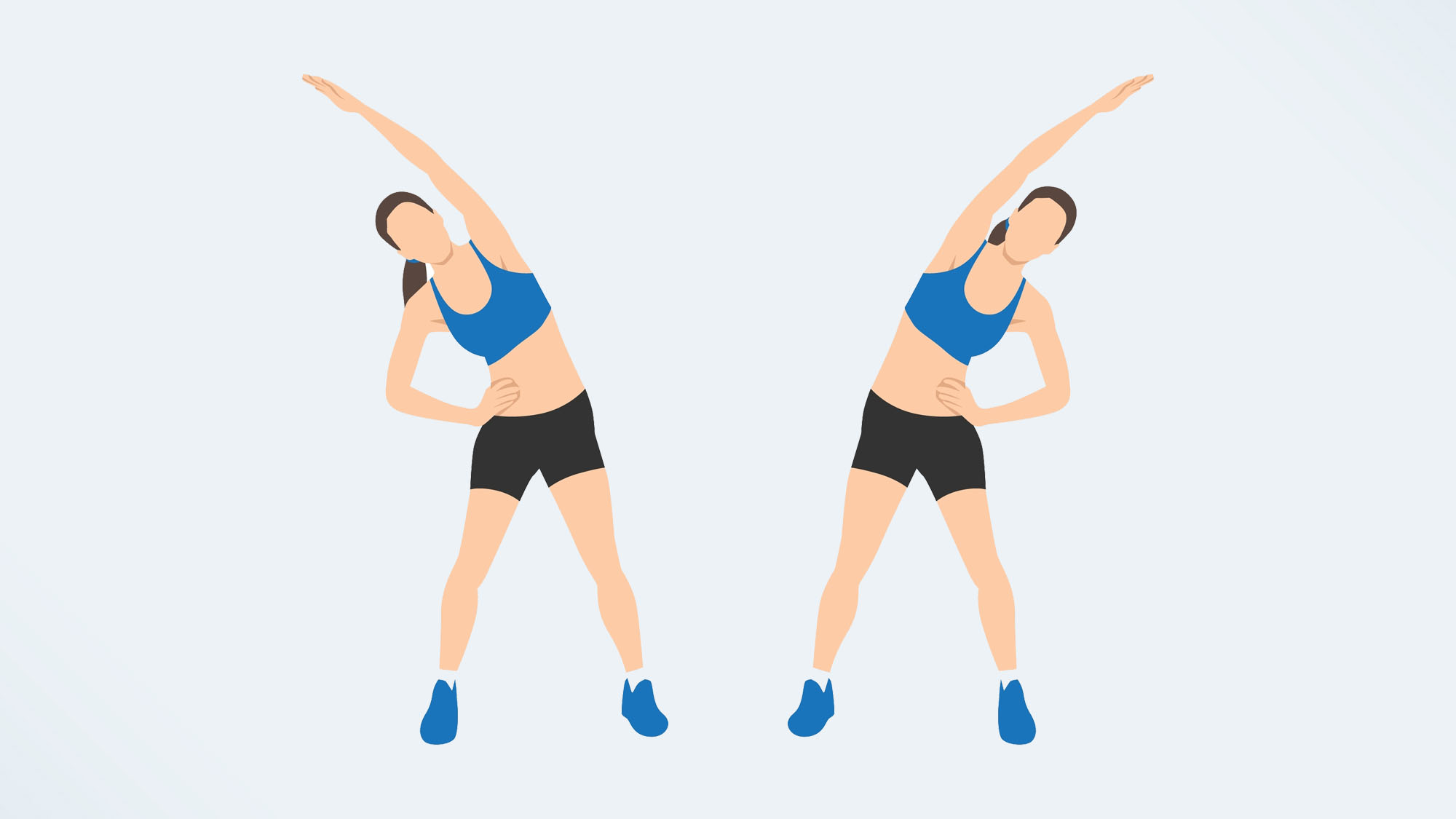
IT band stretch
Iliotibial band syndromes are very common in runners. This exercise will stretch the outside of your thigh between your hip and shin to prevent pain post-exercise.
- Start off standing and cross your left ankle behind your right.
- Reach your left arm up and over to your right.
Hold for 30 seconds and repeat to stretch the other side.
Looking for more workout inspiration? Use this at-home Pilates workout with weights to strengthen your entire body, plus, take a look at the best stretches for tight hip flexors here.
If you're a runner, check out the best Nike running shoes, as well as the best carbon fiber shoes to wear on race day here. We've also found the best running watches, the best running sunglasses, and the best running belts here.

Jane McGuire is Tom's Guide's Fitness editor, which means she looks after everything fitness related - from running gear to yoga mats. An avid runner, Jane has tested and reviewed fitness products for the past five years, so knows what to look for when finding a good running watch or a pair of shorts with pockets big enough for your smartphone. When she's not pounding the pavements, you'll find Jane striding round the Surrey Hills, taking far too many photos of her puppy.
